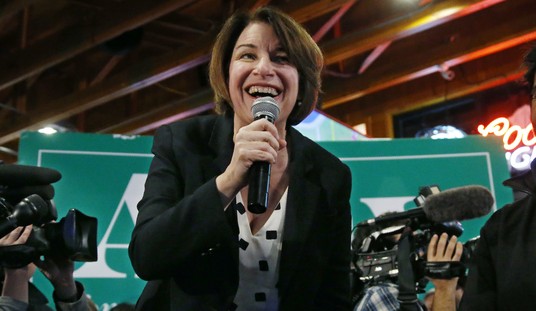We have three more months of punditry before the 2016 presidential primaries have any hard data to work with. Oh, there’s data now – polls, endorsements, money raised and spent, staff hired and fired – but until February 1, 2016 in Iowa, no votes will be cast, no delegates awarded. Still, if you are planning ahead, it’s worth looking at the calendar now to understand what’s coming. There are important lessons here to incorporate in any assumptions about how the race will play out.

I’m working here from the excellent compilation at The Green Papers, and bear in mind that the calendar still is not entirely set in stone – a few states have changed their systems in the last few weeks. But we’re getting closer to a final calendar around which plans can be made. Also, recall that the system to award delegates is far too complicated to summarize in a single chart. The Green Papers summary has a lot of links you need to click to figure out the system in each state:



If that all looks a little bewildering and overwhelming, you’re not alone: there’s a ton of variation in how different states do this; states that appear to be winner-take-all are in some cases only so if the winner wins every Congressional District in the state, in other cases so only if the winner takes a majority of the popular vote. Then there’s the filing deadlines and deadlines for printing and mailing ballots, all of which may factor into withdrawal decisions behind the scenes. The dates are picked for the most part by state legislatures, usually choosing the date for both parties at once, and between them and the state parties there are a lot of different actors with different agendas at work here, so trying to find a unifying intent behind all this is a fool’s errand. Nonetheless, if we walk through the calendar, we can see some themes emerging.
February
The early states award few delegates, and only South Carolina can be winner-take-all, so as in past years, these states will play almost no role in who is the nominee, but an outsize role in who is not. Some of the 14 remaining Republican contenders (assuming they even survive to February, which some may not) have a single early state that they must either win or show strongly in; others will be winnowed out only by a series of bad showings.
Iowa will eliminate Bobby Jindal, Mike Huckabee and Rick Santorum if they don’t run in the top 3 or so, and possibly [mc_name name=’Sen. Rand Paul (R-KY)’ chamber=’senate’ mcid=’P000603′ ] as well; realistically, it’s hard to see any of those candidates as a serious threat if they don’t win Iowa outright. Given Ben Carson’s ideal fit for the state and the expectations raised by his current lead there, he too is probably doomed to drift gradually out of relevance if he doesn’t win Iowa.
Iowa has a poor record of picking the nominee in the 7 contested Republican primaries since 1976:

but on the whole, candidates have rarely finished much higher or lower in the end than they did in Iowa:

New Hampshire is similarly a make-or-break state for Chris Christie, John Kasich and George Pataki, plus [mc_name name=’Sen. Lindsey Graham (R-SC)’ chamber=’senate’ mcid=’G000359′ ] has said that he will withdraw before his home state of South Carolina if he doesn’t show well in either of the two early states. Donald Trump can afford to lose Iowa, which was always a bad fit for him, but given how much of his campaign depends on being a frontrunner and New Hampshire’s status as a not-very-religious Northeastern state with a ton of independent voters and a history of warming to Pat Buchanan, it’s hard to see how Trump would survive a failure to win the Granite State (where he currently leads in the polls). Jeb Bush in theory is not dependent on a single state given his money and organization, but since he’s already all but dead in Iowa and has no specific geographic base outside his home state, a poor showing in New Hampshire might be curtains for Jeb if he’s still in it by then.
South Carolina, besides being Graham’s home state, will be a critical test of strength for [mc_name name=’Sen. Ted Cruz (R-TX)’ chamber=’senate’ mcid=’C001098′ ] and/or Carson (plus any of the candidates who needed to survive Iowa and did) ahead of the following week’s “SEC primary,” and there’s two weeks leading into it after New Hampshire. It’s harder to predict what finishes off Jim Gilmore, given the fundamentally delusional nature of his campaign, but since most of his campaign spending so far has been the $40,000 filing fee to get on the South Carolina ballot, one assumes he’ll remain nominally in the race through SC.
Nevada, three days after South Carolina, is about where [mc_name name=’Sen. Marco Rubio (R-FL)’ chamber=’senate’ mcid=’R000595′ ] needs to start showing some real strength, given his roots in the state, its large Hispanic population and his courting of the state’s influential Mormon bloc. Rubio and Carly Fiorina are both candidates without a real regional base (besides Florida for Rubio), so they can survive longer without an outright win if they can finish near the top in a few places. But Fiorina in particular has no natural home among the February states and her home state – where she’s never won an election – doesn’t vote until June.
March
“SEC Tuesday” on March 1 will put to the test the theory that one candidate – particularly Cruz, although Huckabee had originally planned around this – could start to run the table of Southern states. If Cruz is going to win the nomination, he needs to emerge from March 1 as the delegate leader, given both the big Southeastern states and his home state of Texas, which he has to himself after Rick Perry dropped out. Unfortunately for Cruz, Texas is a weak winner-take-all state, in that he would need to win a majority of the vote statewide and in each district to claim all its delegates – a challenging proposition if the field’s still crowded at that point (and Cruz too has only won one, lightly-contested election in his home state, so the depth of his appeal and organization in Texas remains a bit untested). Many of the states in bold on the chart are likewise not automatic winner-take-all.
[UPDATE: As noted in the comments below, I’m possibly being too dismissive of Cruz’s vote-getting abilities in Texas given his sound defeat of David Dewhurst in the 2012 primary, which I discussed in my original assessment of Cruz as a potential Presidential candidate here]
The week ending Tuesday, March 8 doesn’t all vote on the same day. It’s when the big Midwestern states start to come online with Michigan (in the past, an early state), it sees the end of the Deep South, and it features Puerto Rico, which could be a big prize for Rubio as (if Jeb is gone by then) the only Spanish-speaking candidate in the field.
The week ending Tuesday, March 15 is where Florida looms, and its status as a later state this year is good news for Rubio and Jeb, or rather for Rubio or Jeb (assuming only one of them’s still in the race), because it’s relatively delegate-rich (though far less so than Texas or California) and winner-take-all, and an earlier date would force them to fight each other more directly, earlier on, than they’d like (although the past week suggests that Jeb is already feeling the need to do that). And it comes the same day as Ohio and Illinois, meaning that three of the nine states that have picked a winner in every GOP primary since 1976 – two of them crucial general-election swing states – all vote at once (Ohio is also winner-take-all).

If in fact, as many of us now expect, the race comes down to a Cruz-Rubio showdown (in which case Rubio, despite his solid conservative record, will be the candidate preferred by moderate and establishment voters), this is the start of his firewall against Cruz, which in that scenario depends on Florida, the Midwest and the blue states, many of which have late, winner-take-all primaries. A similar dynamic, but possibly with a different map, should play out of the final 2 candidates standing are one more insurgent-leaning and one more establishment-palatable.
After that, the primaries start to space out a bit – Colorado, Indiana, Oregon and Washington each have a week to themselves on the current schedule, and New York has two. Tuesday, April 26 is the big Northeastern/Atlantic prize, dominated by Pennsylvania in the week after New York. If the race drags all the way to the end, like Ford-Reagan in 1976 and Obama-Clinton in 2008, the California-and-New Jersey dominated June 7 primary day should provide someone with a coup de grace.
Buckle up. This could be a long ride.














Join the conversation as a VIP Member